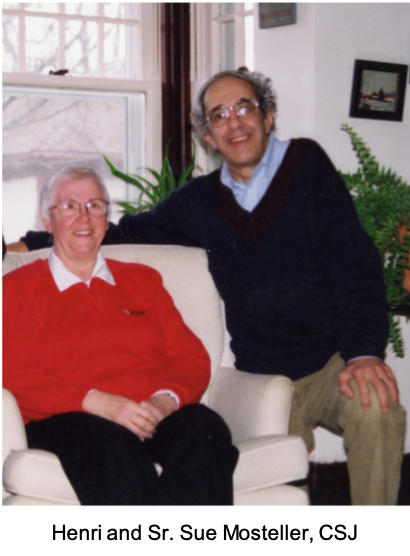Reading: Chapter 6 – The Enduring Power of The Return of the Prodigal Son
This book is for us what the painting was for Nouwen. . . . Reading
The Return of the Prodigal Son is to be introduced to ourselves.
Nouwen introduces us to our own depth. (p. 140)
We have come to the final week of another enriching book discussion. Thanks to each of you who have joined us along the way. I’m especially grateful that those of you who are regular participants in these discussions have responded positively to the scholarly and personal insights Gabrielle Earnshaw gleaned from her years immersed in Henri’s life and work. I know that her carefully crafted book deepened my understanding of Henri Nouwen and that appears to be the case for a number of you as well.
This week Gabrielle reminds us that both Henri Nouwen and his fellow Dutchman Rembrandt completed their masterful reflections on the Prodigal Son a few short years before they died at age 64 and 63 respectively. She perceptively writes, “The power of both works derives from their creators’ difficult lives of struggle, as well as their artistic maturity. The painting and the book are spiritual testaments to hard-won wisdom.” Gabrielle applies Nouwen’s wisdom to several timely themes and illuminates why The Return of the Prodigal Son continues to touch the hearts of people who may feel lost and are seeking the compassionate love of the Father in our challenging world today.
As we conclude our discussion, you are invited to comment on the reading this week or in any of the earlier chapters. As before, here are a few excerpts and questions that my prompt you.
- Both Nouwen and Rembrandt were masters of self-portraits. . . Yet what set these works apart as masterpieces is portraiture of a different kind–God’s. (p. 137) Has your picture (or portrait) of God changed as a result of insights gained from reading this book and reflecting on the portraits painted by our two artists?
- The Return of the Prodigal Son is the story of Nouwen’s journey from a needy, anxious university professor into a needy, anxious pastor, but he has grown in consciousness. (p. 139) Are there things you may have learned about Henri’s journey that may assist you on your own? Please share to the extent you are comfortable.
- Drawing on her comprehensive research and “living with” Henri for many years, Gabrielle invites us to consider her personal observations on Father Figures and Toxic Masculinity and A Both/And God. How do you respond to these ideas? Are there implications for your life and spirituality?
- With (Henri’s) example, we can be emboldened to take our own flights of courage and grace. We, too, can risk it all when we trust in God’s forgiving love. (p. 148) What holds you back from trusting in God’s forgiving love? What must you do take to take flights of courage and grace?
This Thursday, July 16th, author Gabrielle Earnshaw will respond to any questions or comments you may wish to address to her directly. If you have questions or comments for Gabrielle, submit them as usual, preferably by Wednesday night. They will be posted when submitted. Gabrielle will respond to those questions and comments throughout the day on Thursday.
Once again, thanks to all of you for making our 2020 summer book discussion an interesting, rewarding, and fruitful experience. We look forward to welcoming you back for this Advent to discuss another book by Henri Nouwen. We will announce our selection by early-October on our website and in the Daily Meditations email.
Be well and may the Lord give you peace.
Ray

